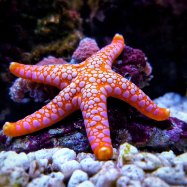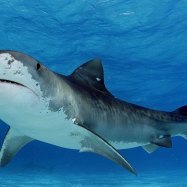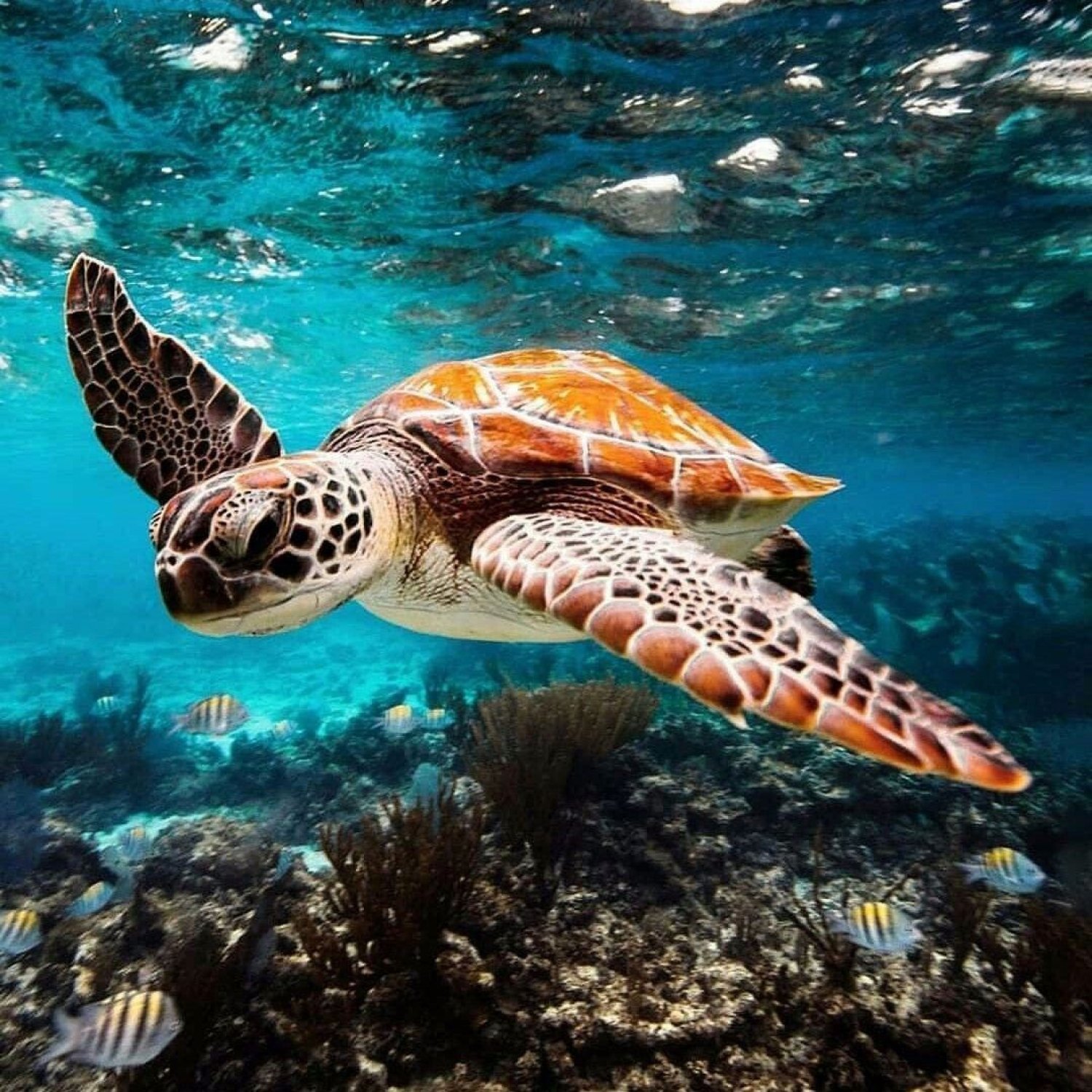
Sea Turtle
2 to 6 feet (0.6 to 1.8 meters)
Meet the magnificent sea turtle, found in oceans and seas worldwide! These graceful creatures can reach lengths of up to 6 feet and belong to the Cheloniidae family. With a streamlined body and large flippers, they are built for swimming and have been navigating our oceans for millions of years. #AnimalFact #SeaTurtle #OceanLife
Animal Details Summary:
Common Name: Sea Turtle
Kingdom: Animalia
Habitat: Ocean and coastal areas
The Majestic Sea Turtle: An Oceanic Wonder
From the vastness of the ocean to the sandy shores of the coast, there is one creature that has captured the hearts and minds of humans for centuries – the sea turtle. This ancient creature has been roaming the world's oceans for over 100 million years, making it one of the oldest living species on Earth. With its unique characteristics and vital role in the ocean ecosystem, the sea turtle is truly a wonder of nature.The scientific name for sea turtles is Cheloniidae, and they belong to the order Testudines, making them close relatives of land turtles and tortoises Sea Turtle. They are also part of the class Reptilia, meaning they are cold-blooded animals. Sea turtles can be found in ocean and coastal areas all around the world, from the tropical waters of the Caribbean to the icy depths of the Arctic.
Despite their widespread presence, sea turtles are considered endangered species due to various threats such as pollution, climate change, and unsustainable fishing practices. Therefore, it is essential to raise awareness about these beautiful creatures and their role in the ocean's delicate balance.
In this article, we will delve deeper into the world of sea turtles – from their physical characteristics and geographic distribution to their feeding habits and habitat. So, buckle up and join us on this journey to discover the fascinating world of sea turtles.
The Physical Characteristics of Sea Turtles
Sea turtles have a unique and recognizable appearance that sets them apart from other marine animals. They have a large, streamlined body with flippers that allow them to glide gracefully through the water. The average length of a sea turtle is about 2 to 6 feet (0 Siamese.6 to 1.8 meters), with the largest recorded sea turtle reaching over 8 feet (2.4 meters) in length and weighing over 2,000 pounds (907 kilograms).The body of a sea turtle is covered with a hard, protective shell called a carapace, which is made up of small bones fused together. The color of a sea turtle's shell can vary depending on the species, but they are usually dark colors such as green, black, or brown. This coloration helps them camouflage in the ocean and protects them from predators.
Another distinctive feature of sea turtles is their head, which houses their unique beak-like mouth. This mouth is specially adapted for their carnivorous diet, allowing them to eat prey such as jellyfish, crabs, and sea sponges. Their jaw is serrated, which helps them tear apart their food, and their throat has sharp spines that prevent their food from escaping.
Where do Sea Turtles Live?
As their name suggests, sea turtles predominantly live in the ocean, but they also venture to the coast to lay their eggs. They can be found in all the earth's major oceans, from the Indian Ocean to the Pacific Ocean. However, some species have more specific habitats.For example, the most common species of sea turtle – the green sea turtle – prefers the warm tropical waters of the Caribbean and the Indo-Pacific region. On the other hand, the leatherback sea turtle can tolerate cooler temperatures and can be found as far north as Canada and as far south as the southernmost point of Chile.
Interestingly, sea turtles also have a strong connection to specific nesting sites. They often return to the same beaches where they were born to lay their eggs, which is vital for the survival of their species. This behavior is called natal homing and is still a mystery to scientists. However, it is believed that sea turtles use the Earth's magnetic fields to navigate back to their birthplace.
The Feeding Habits of Sea Turtles
Sea turtles are carnivorous animals, meaning they primarily feed on other animals. However, their diet can vary depending on their species. For instance, the green sea turtle is primarily herbivorous, feeding on seagrasses and algae. On the other hand, the leatherback turtle is primarily carnivorous, preying on jellyfish.Despite their strong jaws, sea turtles are not fast swimmers. Therefore, they use a sit-and-wait strategy to hunt for food. They wait patiently for their prey to pass by, and then they use their powerful jaws and sharp spines to catch and eat their food.
The feeding habits of sea turtles play a crucial role in maintaining the ocean's ecosystem. They help control the population of other marine animals, ensuring the overall balance of the ocean's food web.
The Importance of Sea Turtles in their Habitat
Aside from their role in maintaining the food web, sea turtles serve other essential functions in their habitat. For instance, they are considered ecosystem engineers, as they help shape their environment by creating habitats for other marine animals.For example, their nesting activities on beaches contribute to the formation of dunes, which provide shelter for other animals. The digging of their nests also aerates the sand, allowing the infiltration of oxygen, essential for the survival of other organisms.
Moreover, sea turtles are known as nutrient cyclers, as their migration from one location to another allows for the transfer of nutrients between different areas of the ocean. This helps maintain the health and diversity of the ocean's ecosystems.
The Threats Facing Sea Turtles
Despite their crucial role in the ocean's ecosystem, sea turtles are facing numerous threats that endanger their survival. One of the most significant threats is pollution, particularly plastic pollution. Plastic debris in the ocean poses a significant threat to sea turtles as they often confuse it for food, leading to entanglement and ingestion.Climate change is another significant threat to sea turtles. As the ocean temperature rises, it affects the sex ratio of sea turtles, resulting in a skewed balance of males and females. This imbalance can have severe implications on their breeding and survival rates.
Unsustainable fishing practices, such as trawling and longline fishing, also contribute to the decline of sea turtle populations worldwide. These fishing methods often result in the accidental capture of sea turtles, leading to injuries or death.
Conservation Efforts for Sea Turtles
Fortunately, there are numerous conservation efforts in place to help protect and preserve sea turtles. Many countries have implemented laws and regulations to protect them, making it illegal to harm or trade sea turtles and their products. These laws have led to some positive changes, as sea turtle populations are slowly starting to recover in some areas.Various organizations and initiatives also focus on protecting sea turtles, such as the Sea Turtle Conservancy and the Sea Turtle Restoration Project. These organizations work to raise awareness, conduct research, and implement conservation plans to protect sea turtles and their habitats.
Individual actions can also make a significant difference in helping sea turtles. Simple acts like reducing plastic usage, properly disposing of trash, and choosing seafood from sustainable sources can all contribute to the conservation of sea turtles.
Fascinating Facts about Sea Turtles
- Sea turtles are one of the world's longest-living animals, with some species known to live up to 80 years.- Unlike most reptiles, sea turtles do not have teeth. Instead, their jaw is specially adapted for crushing and tearing apart their food.
- Male sea turtles never leave the ocean, while females return to the beach only when it is time to lay eggs.
- Sea turtles are oceanic navigators, using Earth's magnetic fields to navigate back to their nesting sites.
- Depending on the species, sea turtles can lay anywhere from 50 to 200 eggs in a single nest.
- The sex of a sea turtle is not determined by genetics but by the temperature of the sand in which the eggs are incubated.
- Sea turtles are considered a keystone species, meaning their survival is crucial for the stability of their entire ecosystem.
- The largest species of sea turtle is the leatherback, and the smallest is the Kemp's ridley.
In Conclusion
The sea turtle is not just any animal; it is an ancient creature that has lived on this planet for millions of years. Its unique characteristics, vital role in the ocean ecosystem, and cultural significance make it a truly remarkable animal. However, with the numerous threats facing sea turtles, it is essential to educate ourselves and take action to protect them and their habitats. As legendary scientist Jacques Cousteau once said, "the sea, once it casts its spell, holds one in its net of wonder forever." Sea turtles are undoubtedly a part of that spell, and it is our responsibility to ensure they continue to roam the oceans for many generations to come.

Sea Turtle
Animal Details Sea Turtle - Scientific Name: Cheloniidae
- Category: Animals S
- Scientific Name: Cheloniidae
- Common Name: Sea Turtle
- Kingdom: Animalia
- Phylum: Chordata
- Class: Reptilia
- Order: Testudines
- Family: Cheloniidae
- Habitat: Ocean and coastal areas
- Feeding Method: Carnivorous
- Geographical Distribution: Worldwide
- Country of Origin: Various countries
- Location: Oceans and seas
- Animal Coloration: Varies, but usually dark colors like green, black, and brown
- Body Shape: Streamlined with a large, flippers
- Length: 2 to 6 feet (0.6 to 1.8 meters)
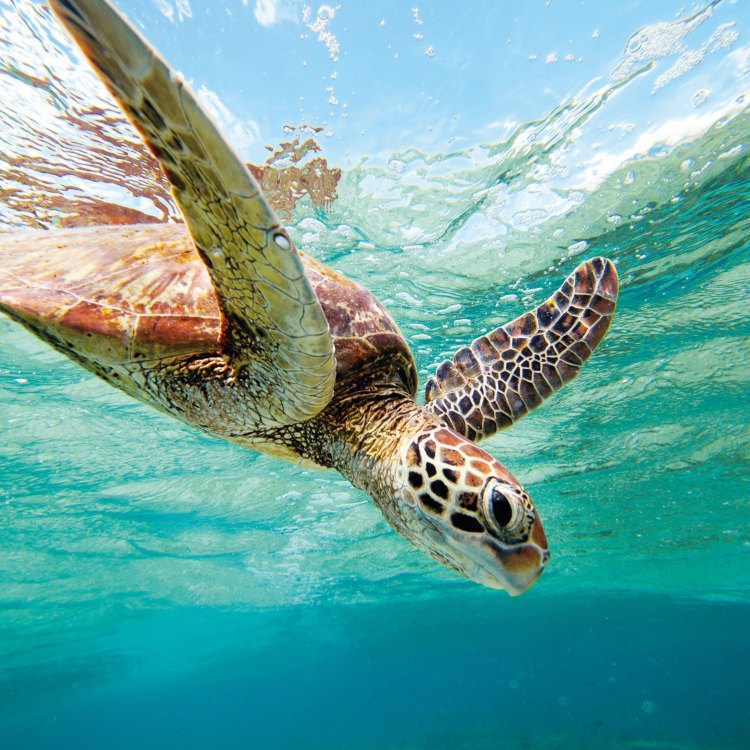
Sea Turtle
- Adult Size: Varies by species
- Average Lifespan: Up to 80 years
- Reproduction: Sexual
- Reproductive Behavior: Mating and egg-laying
- Sound or Call: No distinct sound or call
- Migration Pattern: Some species migrate long distances
- Social Groups: Generally solitary, except during nesting season
- Behavior: Swimming, diving, and basking
- Threats: Habitat loss, pollution, poaching, and climate change
- Conservation Status: Endangered
- Impact on Ecosystem: Maintains balance in marine ecosystems
- Human Use: Consumption of eggs, meat, and products
- Distinctive Features: Hard shell, flippers, and sharp beak
- Interesting Facts: Sea turtles are ancient creatures that have been around for over 100 million years. They can migrate long distances and have a unique way of navigating using Earth's magnetic field. Female sea turtles return to the same beach where they were born to lay their eggs. Sea turtles have a symbiotic relationship with cleaner fish that remove parasites from their skin. Seven species of sea turtles are currently recognized.
- Predator: Sharks, large fish, and humans
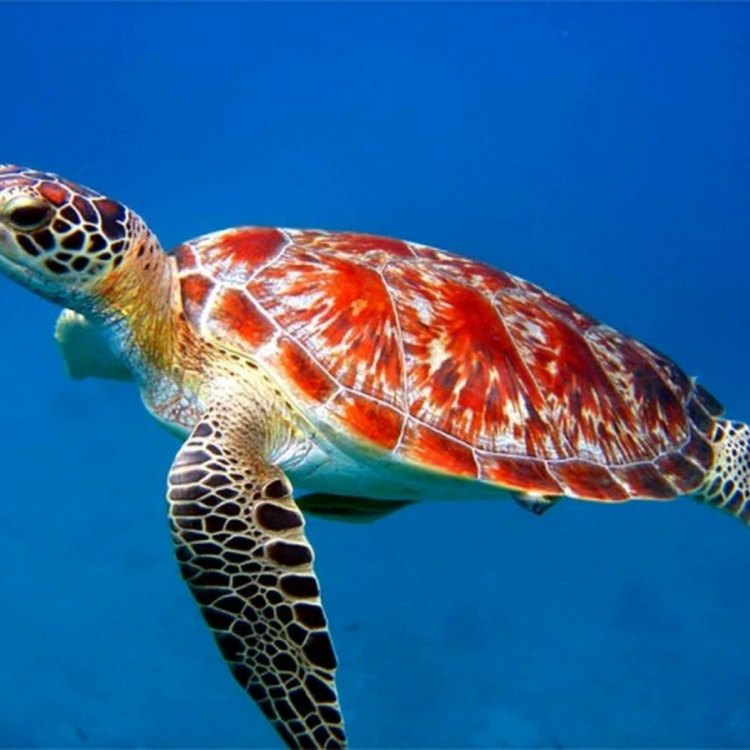
Cheloniidae
The Fascinating World of Sea Turtles: Ancient Creatures of the Sea
When we think about the ocean and its creatures, images of colorful fish, coral reefs, and majestic whales may come to mind. However, there is one creature that has been lurking in the depths of the ocean for over 100 million years - the sea turtle. These ancient creatures have survived the test of time and have inhabited the Earth's oceans long before dinosaurs roamed the land.With an adult size that can vary by species, ranging from just a few inches to over 3 feet in length and an average lifespan of up to 80 years, sea turtles are fascinating creatures that have captured the attention of people all over the world PeaceOfAnimals.Com. But there is more to sea turtles than just their physical attributes; their behavior, threats, and conservation status have made them an integral part of our ecosystem.
Let's dive deeper into the world of sea turtles and discover their unique features, behavior, and the impact they have on our planet.
Reproduction and Behavior
Like most living beings, sea turtles reproduce sexually. However, their reproductive behavior is quite different from other species. Female sea turtles return to the same beach where they were born, known as their natal beach, to lay their eggs. This phenomenon, known as natal homing, is a remarkable aspect of sea turtle behavior that has puzzled scientists for years. Despite traveling thousands of miles across the ocean, female sea turtles are able to find their way back to the exact location where they were born.After digging a deep hole in the sand with their flippers, female sea turtles lay their eggs, which can range from 50 to over 200, depending on the species. Once the eggs are safely buried in the sand, the female sea turtle returns to the ocean, leaving the eggs to hatch on their own Sheep.
The gender of sea turtles is determined by the temperature of the eggs during incubation. Warmer temperatures produce more females, while cooler temperatures produce more males. This unique and delicate balance is essential for the survival of sea turtle populations.
Migration Patterns and Social Behavior
Some species of sea turtles are known for their long-distance migration patterns. The leatherback sea turtle, for example, can travel up to 10,000 miles between nesting and feeding grounds. During these migrations, sea turtles rely on a remarkable navigational ability - the ability to detect and use the Earth's magnetic field. This ability allows them to navigate back to their nesting beaches and feeding grounds with incredible accuracy, even after being away for several years.Sea turtles are generally solitary creatures, spending most of their time swimming and foraging for food. However, during nesting season, female sea turtles congregate on the same beach to lay their eggs. This is the only time in their lives where they interact with other sea turtles.
After hatching, sea turtles spend most of their time in the water, although they can often be seen basking in the sun on beaches or rocks. They are excellent swimmers, using their flippers to propel themselves through the water, and can hold their breath for several hours while diving for food.
Distinctive Features and Interesting Facts
One of the most distinctive features of sea turtles is their hard, protective shell, called a carapace. Unlike other turtles, the shell of a sea turtle is streamlined and cannot be retracted into its body. This adaptation allows them to swim swiftly and navigate through ocean currents with ease.Another unique feature of sea turtles is their sharp, pointed beak, perfect for snipping sea grass and other plants that make up a large portion of their diet. In addition, their flippers are shaped like wings, making them excellent swimmers but clumsy on land.
Not only are sea turtles fascinating in terms of their physical characteristics and behavior, but they also have important roles in our ecosystem. As herbivores, they help maintain the balance of sea grass beds and coral reefs, keeping them from getting overgrown and unhealthy.
Other interesting facts about sea turtles include their symbiotic relationship with cleaner fish. These fish remove parasites and algae from the sea turtles' shells, keeping them clean and healthy. In return, the sea turtles provide a safe place for the fish to live and feed. Additionally, sea turtles are known to be one of the few animals that can cry. However, scientists believe that the tears act as a way to excrete excess salt from their bodies, rather than an emotional response.
Threats to Sea Turtles and Conservation Status
Unfortunately, sea turtles face numerous threats in the ocean, including habitat loss, pollution, poaching, and climate change. As human activities continue to harm our oceans, sea turtles are among the most vulnerable species. The loss of nesting beaches due to coastal development and pollution from plastic and oil can harm or kill sea turtles. Illegal poaching for their meat, eggs, and other products also negatively impacts sea turtle populations.Out of the seven species of sea turtles recognized, six are classified as endangered, and one is listed as vulnerable on the IUCN Red List. Due to the critical role sea turtles play in maintaining the balance of our oceans' ecosystems, their decline would have devastating consequences for marine life and ultimately, humans.
Human Use of Sea Turtles
Unfortunately, humans are not only a threat to sea turtle populations but also rely on them for consumption. Sea turtle eggs, once considered a delicacy, are still consumed in some cultures. In addition, sea turtle meat, oil, and shells are used in traditional medicines and handicrafts. While these practices have been banned in many countries, they still continue illicitly.In Conclusion
Sea turtles are truly incredible creatures that have been around for millions of years. Their unique features, behavior, and incredible navigational abilities have captivated the minds of people all over the world. However, their declining populations and endangered status serve as a reminder of the impact of human activities on our planet's delicate ecosystems.It is crucial to take action to protect sea turtles and their habitats by reducing pollution, enforcing laws against poaching, and promoting responsible tourism. By doing our part, we can ensure that these ancient creatures will continue to grace our oceans for generations to come. So, let's work together to preserve the fascinating world of sea turtles, so future generations can also experience their beauty and wonder.
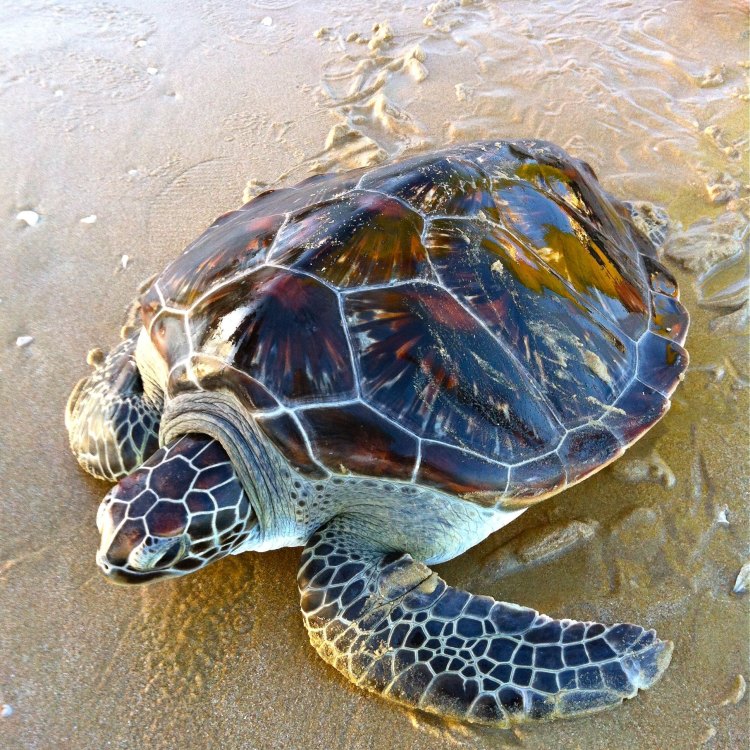
The Majestic Sea Turtle: An Oceanic Wonder
Disclaimer: The content provided is for informational purposes only. We cannot guarantee the accuracy of the information on this page 100%. All information provided here may change without prior notice.



